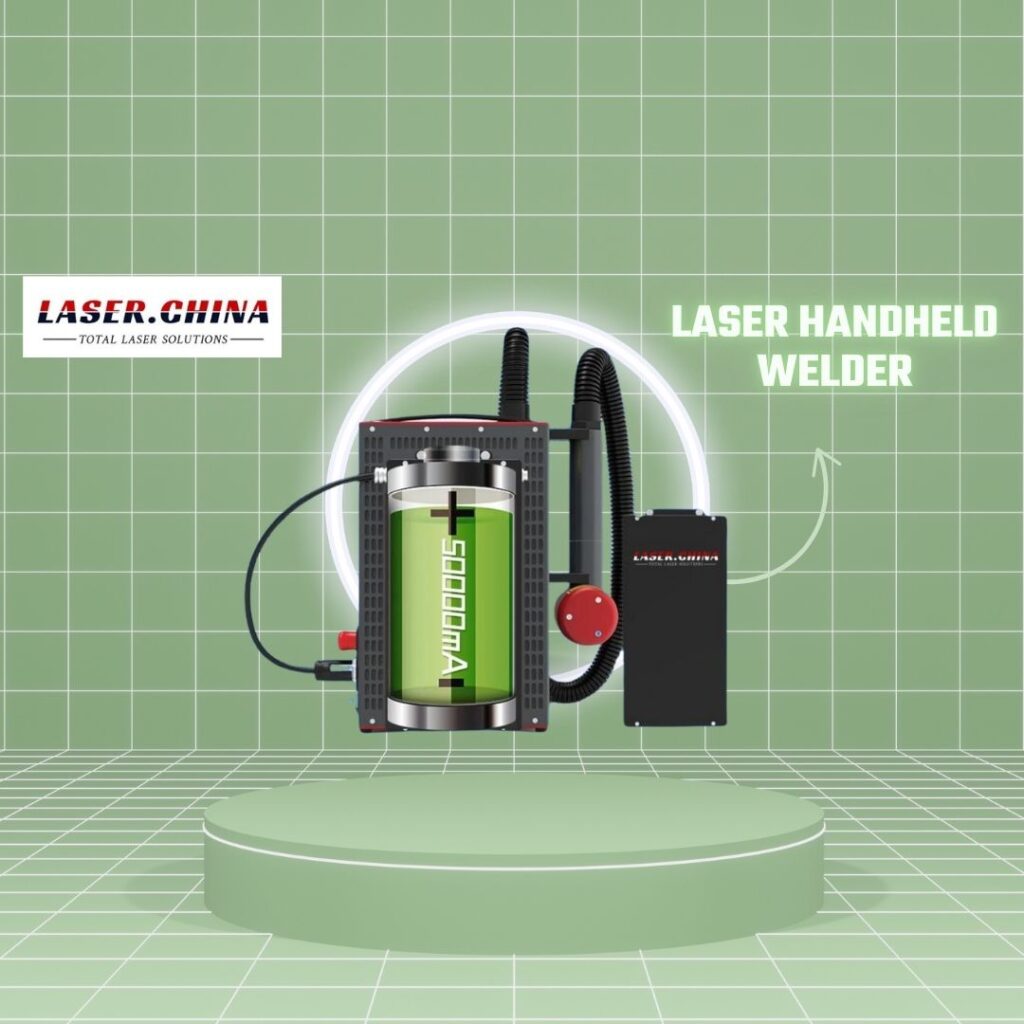Handheld fiber lasers are increasingly popular in metalworking and industrial applications for their versatility, precision, and ease of use. These devices combine the efficiency of fiber laser technology with the flexibility of a handheld tool, making them ideal for tasks like welding, cleaning, and engraving. In this article, we’ll discuss the key benefits of handheld fiber lasers and how they enhance productivity and quality in various industries.
1. Portability and Flexibility
One of the most notable advantages of a handheld fiber laser is its portability. Traditional laser systems are usually fixed, requiring the workpiece to be brought to the machine, which can be challenging for large or immovable objects. Handheld fiber lasers, however, are lightweight and compact, allowing operators to take the laser directly to the workpiece. This flexibility is beneficial in fields like construction, automotive repair, and heavy machinery maintenance, where equipment might need to be welded or cleaned on-site.
The ergonomic design of handheld fiber lasers also makes them user-friendly and reduces operator fatigue. Many handheld models are equipped with user-friendly grips, enabling extended use without discomfort. This portability and ease of handling make them a practical tool for small to medium-sized workshops as well as larger industrial environments.
2. High Precision and Minimal Thermal Distortion
Fiber lasers are known for their precision, and handheld fiber lasers are no exception. The laser beam produced by a fiber laser is highly concentrated, enabling accurate work on even small or intricate parts. This level of precision is essential in industries where quality and detail are critical, such as electronics manufacturing, jewelry, and automotive applications. Handheld fiber lasers allow operators to make precise cuts, welds, or engravings with minimal error.
Additionally, fiber lasers produce a smaller heat-affected zone (HAZ) compared to traditional welding or cutting methods. This minimizes thermal distortion and prevents damage to surrounding areas of the material, which is especially valuable when working with delicate or thin metals. The reduced heat input also helps maintain the structural integrity of metals and results in cleaner finishes, decreasing the need for additional processing or touch-ups.
3. Versatility for Multiple Applications
Handheld fiber lasers are versatile tools that can be used for a variety of applications, including welding, cutting, engraving, and cleaning. In welding applications, they offer strong, consistent welds with minimal spatter, making them ideal for stainless steel, aluminum, titanium, and other metals. Their cutting capabilities allow precise and smooth cuts on different metal thicknesses, which is useful for custom fabrication and repair work.
In addition to welding and cutting, handheld fiber lasers are often used for laser cleaning. This process involves removing rust, paint, or oxide layers from metal surfaces in preparation for further work. Laser cleaning is an eco-friendly and chemical-free alternative to traditional methods, as it uses laser energy to vaporize contaminants rather than abrasive materials or chemicals. This versatility allows operators to handle various tasks with a single tool, improving productivity and reducing the need for multiple machines.
4. Cost-Effectiveness and Efficiency
Though the initial cost of a handheld fiber laser can be higher than traditional methods, the long-term cost-effectiveness is a significant advantage. Fiber lasers have low maintenance requirements and a long lifespan due to their solid-state design and robust construction. They require less upkeep compared to other types of lasers, such as CO₂ lasers, and their energy efficiency means they consume less power, which reduces operational costs over time.
Moreover, handheld fiber lasers improve efficiency in the workplace. Their high-speed performance allows operators to complete tasks quickly without compromising quality, which boosts productivity. Faster welding, cutting, or cleaning times lead to quicker project completion, making handheld fiber lasers a valuable asset for industries with high production demands.
5. Enhanced Safety and User Control
Safety is a top concern in industrial environments, and handheld fiber lasers are designed with this in mind. Many models come equipped with safety features such as interlock systems, emergency stop buttons, and protective shields to minimize the risk of injury. These features provide peace of mind for operators, especially in settings where multiple people are working in close proximity.
Additionally, handheld fiber lasers allow for precise control over the laser beam, giving operators the ability to adjust settings for different tasks or materials. This level of control is beneficial when switching between applications, as it ensures that the laser is set to the appropriate power and focus for each specific job. As a result, operators can work safely and efficiently, reducing the likelihood of mistakes or accidents.
Conclusion
Handheld fiber lasers offer numerous advantages for metalworking and industrial applications, including portability, precision, versatility, and efficiency. Their ability to perform a variety of tasks—such as welding, cutting, engraving, and cleaning—makes them a versatile tool for industries ranging from automotive and construction to electronics and jewelry making. While the initial investment may be higher than other methods, their low maintenance, durability, and high efficiency make them a cost-effective option over time. With enhanced safety features and user-friendly designs, handheld fiber lasers empower operators to work safely and accurately, boosting productivity and quality across a range of industrial applications.



